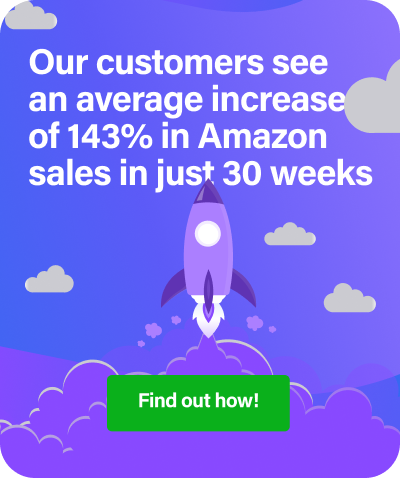Guest post by Amanda O’Brien, Amazon and eBay Expert
Ever get frustrated about your competitors’ cheap pricing? It certainly used to get to me from time to time. Imagine this scenario…you’ve researched a product really thoroughly, discovered that it’s in demand, you’ve sourced and purchased that product at a wholesale price from a supplier and you’re all set ready to list and make some profit.
BUT!
You then discover that the very same supplier that sold you the product has also decided to list the product online and in single units.
So…what happens? You end up competing with your own supplier. How frustrating, annoying and it appears, underhand is that?
However, it is perfectly legal and of course, it is the suppliers’ prerogative to do exactly this. In my opinion, a supplier should really have clear boundaries when it comes to business – either they are a wholesaler and as such, supply in bulk quantities only, OR they are a retailer and sell their products as single units. Why must they confuse matters by doing both?
Well, because quite obviously they are able to immediately undercut other sellers that have purchased products at wholesale from them and make more sales. It’s all about the potential profit as you would expect.
Now, I must point out that not all wholesale suppliers do this and I am also well aware that suppliers do need to shift stock and so by wholesaling and retailing they’ve got themselves a nice double whammy going on.
So, my question is this: if a wholesaler (or in fact any other seller) is undercutting you on price what should you do – indeed is there anything you can do?
Don’t go to war!
First of all, and this goes for any product you are selling online, you need to stick to your guns on pricing. Don’t get caught up in a price war because it will get messy and that doesn’t benefit anyone in the end. Providing you have a quality listing and don’t simply copy and paste information from the suppliers’ website so that your description looks like everyone else’s, you can, in fact, keep up with your rivals, even if you are pricing higher than them. I’m not saying that you’ll necessarily be able to outsell your competition because there will always be buyers who are ‘price orientated’ (particularly on eBay) rather than ‘quality orientated’ but I know of some eBay sellers who sell at between 10% and 30% above the RRP. They consistently make sales and importantly they do make a profit.
7 Ways to Get the Upper Hand
It’s perfectly viable that you will be able to sell your product – and make a profit, even when you are not the cheapest seller, provided you follow these very simple pointers:
1. If your competition is out-selling you, it doesn’t necessarily mean that they are making more money than you!
Your competition may not be very business savvy and they could potentially be just ‘turning money’ or even making a loss. So, whilst you may sell fewer items at a higher price, you’ll make more profit and that’s good business sense.
2. A big advantage to you is having an in-depth knowledge of the product you are selling.
Particularly if a potential buyer telephones or emails you with a technical question. A professional response always helps your cause.
3. Be proud of your knowledge and your experience of the product and make it known.
Add information about yourself and your business to your listings. If you have set opening hours, guarantee that questions will be answered within 24 hours or offer a money-back guarantee – just make sure you tell people.
Also, if you are VAT registered, state in the footer of your listings that you will send a VAT invoice if required – this tiny piece of information can make all the difference because it shows you are a professional.
4. Your title keywords will make all the difference to your product being seen.
Your competitor may not use or understand the importance of using ultra-relevant keywords and if your keywords are more relevant than your competitors, your listing has a good chance of appearing above them in the search results.
Make sure you research the most searched for keywords that are being inputted by actual customers when they are looking for your product type and incorporate them into your title. Once you have got your product under the noses of viewers your description should be enough to make someone buy from you, whatever your price.
5. Always complete the ‘Item Specifics’ section on the Sell Your Item form.
The information you add there is searchable and will help your listings appear prominently in the search results.
6. As an eBay seller, having an eBay shop can give you an advantage over sellers who don’t.
Promote your products via social media – Twitter and Facebook – to give them that extra push and visibility.
7. Use auction listings as a strategy to get more buyers to your shop.
Add a link to your shop within every auction to create extra traffic to your other products – this really works!
And you can do all this whilst retaining a higher price than your competitors. Trust me – undercutting is not the answer. Being professional and profitable is.
Bonus: Another way you can avoid undercutters is by automating for Amazon and eBay prices with RepricerExpress. Get your free 15-day trial today!
Related: How to Avoid a Price War on Amazon



